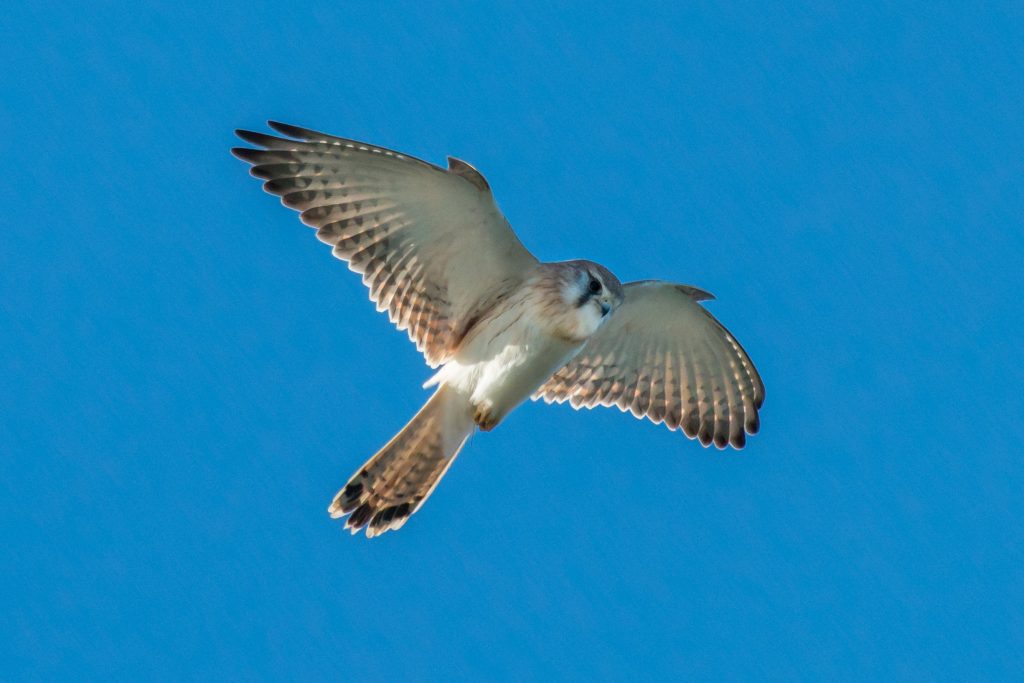Did you know? Kestrels have two super powers: their ability to hover like a helicopter, and to hunt rodents using their ultraviolet light vision. According to a Finnish study published in Nature magazine in 1995, rodents mark their trails with urine and faeces, which can be seen in ultraviolet, but not visible light. ‘In the field, kestrels hunted preferentially near experimental nest-boxes where artificial trails were treated with vole urine and faeces.’
Kestrel, members of the Falco, or falcon genus, are found throughout the world. The Common, or Eurasian kestrel (Falco tinnunculus) is found in Europe, Asia and Africa, while the Nankeen or Australian kestrel, (Falco cenchroides) is found throughout mainland Australia, and in New Guinea.
Nankeen kestrels are a relatively small, slender falcon, 30-35cm long, and weighing 165-18. They have reddish/rufous coloured upper parts, and black on the wingtips. The female is larger than the male, and can be distinguished by stronger markings on her body, and rufous head and tail, whereas the male’s crown is grey. Breeding pairs generally stay together over successive seasons, with the female laying a clutch of around four to six eggs in late winter. They make a scrape nest in tree hollows, in caves, or on building ledges in urban areas.
They can be identified by their characteristic hunting behaviour, hovering 10–20 metres over grasslands ready to swoop down and capture their prey, which comprises insects, small rodents and reptile, such as small lizards. Kestrels also like to perch in trees and human-made structures over an open area, where they can dive down, or ‘stoop’, to capture prey. Kestrels find airport signs, navigation and lighting infrastructure, and buildings attractive perching sites; while the airport open grassland environment can harbour preferred insect prey such as crickets.
Unsurprisingly, therefore, the Nankeen kestrel has appeared in the Australian Transport Safety Bureau’s top 10 struck species in the Bureau’s last two reports, which span the years 2006–2017. The majority of these strikes took place in Queensland (Brisbane, Rockhampton, Townsville and Cairns), followed by NSW, Western Australia, South Australia and the Northern Territory.
Airports must adopt a mix of strategies, active and passive, to manage potential kestrel strike hazards. Airports in Queensland and Western Australia have had varying success, for example, in relocating kestrels, with variable return rates.
Attribution of hero image: Falco_cenchroides_Bushell’s_Lagoon_JJ Harrison [Wikicommons].




